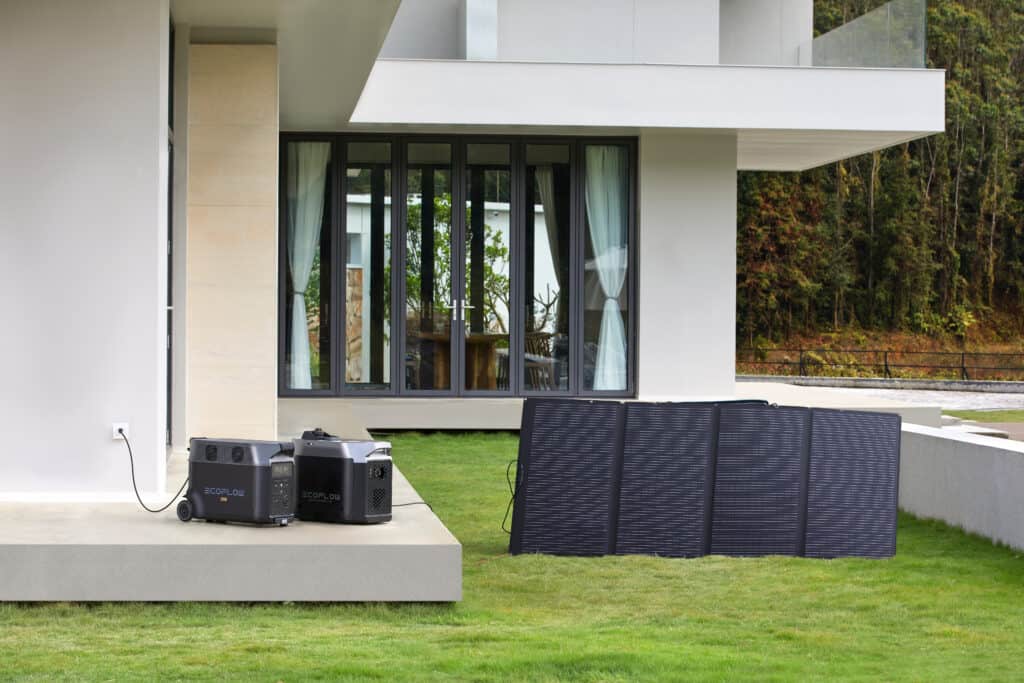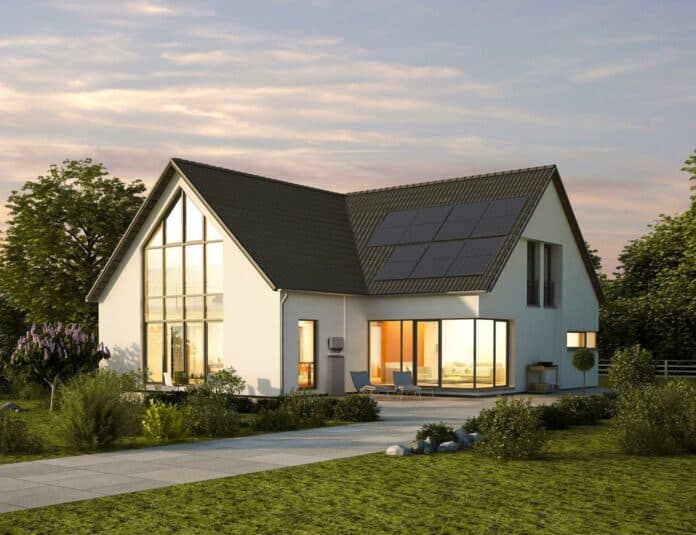Is your monthly energy bill getting you down? As electricity and natural gas prices continue to rise across many parts of the U.S., homeowners are feeling the pinch of high utility costs. But transitioning to renewable energy doesn’t have to break the bank. There are affordable clean energy solutions that can help slash your energy expenses.
This guide covers several budget-friendly options to help you start cutting energy costs today. We’ll explore the cheapest ways to reduce your home’s energy appetite through efficiency upgrades. Plus, newly inexpensive solar and wind power options to help curb your fossil fuel consumption. Reduce your carbon footprint and give your wallet a break with these money-saving clean energy strategies.
Introduction
Energy prices always seem to trend in one direction: up. In 2022 alone, electricity rates for U.S. households surged more than 10% on average. For many families, power bills now make up a substantial portion of monthly housing costs.
Luckily, with today’s improving clean energy technologies, you have more ways than ever to take control of energy expenses for your home. Investing in greater efficiency, solar panels, or small wind turbines can all yield significant long-term savings.
While most upgrades require an initial outlay, the right ones pay for themselves in just a few years through direct energy savings. Others can reduce your costs immediately with no money down. Read on to learn which affordable solutions deliver the fastest and most dramatic cuts in your utility bills.
Energy Efficiency
The adage “the cheapest kilowatt is the one you don’t use” rings especially true when it comes to clean energy. Investing in efficiency to reduce your home’s energy appetite provides the fastest and most consistent return on investment. Here are some of the most accessible, budget-friendly upgrades for immediate energy savings:
Lighting

One of the simplest ways to slash electricity consumption is swapping all your bulbs for LEDs. Thanks to amazing efficiency gains, LEDs use up to 90% less juice than incandescents to produce the same brightness. They also last up to 25 times longer, saving you replacement costs.
While the initial price is higher, LEDs pay for themselves in energy savings in less than a year after installation. Utility rebates can make the switch even more affordable. Going all-LED can reduce lighting energy bills by 75% or more instantly.
Weatherization
Sealing any air leaks around your home provides another fast way to cut energy waste. Gaps and cracks allow hot/cold air to escape and drive up heating and cooling bills. Applying caulk and weatherstripping around leaky doors, windows and attic hatches keeps conditioned air where it belongs.
Adding insulation in under-insulated attics, basements and exterior walls also reduces seasonal energy demand. The small upfront investment in proper weatherization typically pays back in 1-2 years of lower HVAC costs.
Efficient Appliances
Appliances account for over 20% of home energy use on average. Choosing ENERGY STAR certified models like refrigerators, dishwashers and washing machines ensures the greatest efficiency. Smart thermostats better optimize heating and cooling as well.
While pricier upfront, ENERGY STAR appliances cut energy demand enough to recoup the premium cost after just 1-2 years—then keep saving year after year.
Solar Power
Of all the renewable energy alternatives, solar PV offers some of the most affordable, beginner-friendly options. Improvements in solar panel efficiency plus streamlined permitting and financing have made small-scale solar very cost-competitive.
One excellent option for solar-generated backup power is EcoFlow portable power stations like the EcoFlow DELTA Pro. These all-in-one units can store electricity from solar panels and provide home emergency power during outages.
The EcoFlow DELTA Pro, when connected to three sets of EcoFlow 400W portable solar panels, can recharge to 100% in just 3.5 hours. With fast solar recharging and multiple AC/DC outlets, EcoFlow portable power stations are ideal for affordable home solar energy storage and resilience.

Residential Solar
Putting solar panels on your roof provides more direct savings, but comes with higher upfront costs. The average residential solar system ranges from 5-15 kW and costs $15,000-$30,000 installed. Federal and local solar incentives can reduce the gross price by 50% or more, however.
With solar electricity offsetting your grid power purchases, monthly bills drop immediately. In sunnier states like California, Florida and Arizona, the investment in rooftop panels can pay for itself in 4-7 years.
Community Solar
Subscribing to a shared community solar project in your area lets you utilize solar power with little to no upfront cost. You simply pay a monthly fee to receive credits that reduce your normal utility bill.
Compared to rooftop solar, joining community solar provides bigger immediate savings with less financial commitment. It also opens solar access to renters and apartment dwellers. This innovative model makes going solar extremely affordable.
Wind Power
Like solar, wind power benefits from expanded federal tax credits plus falling turbine costs. Small wind systems designed for homes now start at $15,000 for a 10 kW setup. After claiming the federal credit, your net out-of-pocket drops below $10,000.
With ideal wind conditions, a residential turbine can produce 4,000-12,000 kWh annually and eliminate up to 90% of your electric bill. After incentives, wind systems offer payback periods as short as 6-8 years.
Wind does require sizable upfront funding and ample wind resources. But for rural homeowners with high electricity costs, adding a turbine provides impressive long-term savings.
Conclusion
Today’s clean energy landscape offers many affordable options to take control of your utility expenses. Energy efficiency upgrades provide immediate cuts in energy waste for very little money down. And innovative models for accessing solar and wind lower the barriers to renewable power.
Before investing in major purchases like solar panels or turbines, first focus on sealing air leaks, adding insulation and switching to efficient lighting. These simple fixes maximize savings for minimal cost. Then explore options like community solar or residential wind to generate your own emissions-free energy.
With the right efficiency upgrades and renewable investments, you can dramatically shrink monthly utility bills while doing your part for the climate. Lowering home energy use should be the first priority for any budget-minded household.
FAQs
Efficiency upgrades offer the quickest payback and lowest cost per kWh reduced. Sealing air leaks, adding insulation, switching lighting to LEDs, and buying ENERGY STAR appliances provide fast energy savings with minimal investment.
The average price per watt for solar panels is $2.50 to $3.50 after incentives. So for a typical 5 kW system expect total installed costs around $15,000 to $20,000 before credits and rebates. Local electricity rates impact payback period.
Yes, if you have annual average wind speeds of just 8 mph or greater. Residential-scale turbines are designed to operate in less-than-ideal wind conditions. With proper siting, small wind can be cost-effective even in suburban locations.
Simple DIY upgrades like LED bulbs and weatherstripping pay for themselves in less than a year. Adding insulation or replacing appliances takes 1-3 years to recoup costs. More complex renovations like new windows or HVAC systems can take 5-7 years to break even.
According to the DOE, air sealing and insulation can lower home energy costs by up to 20%. The degree of savings depends on your climate zone, existing insulation levels, and the scopes of air sealing. But proper weatherization almost always provides rapid payback.
Community solar allows renters to access solar savings with no roof space required. You simply subscribe to a portion of a shared local solar project and receive credits on your electricity bill. Renters can also invest in green power through renewable energy certificates (RECs) to reduce environmental impact.
